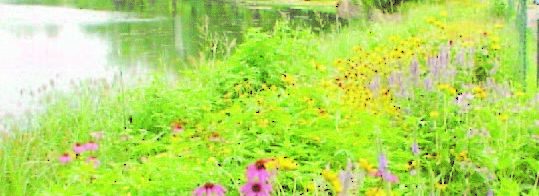

Lawn Care & Fertilizer
The chemical treatments and other organic matter on your lawn have the potential to be swept into Lake Minnetonka, whether directly or through storm drainage systems. By being mindful of your lawn treatment decisions, you can eliminate some chemical run-off that degrades the quality of the Lake.
Phosphorus-Free Fertilizers
High levels of phosphorus in a lake increase the severity of algal blooms. When selecting fertilizers for your yard, look for Phosphorus-Free products. In Minnesota, fertilizers containing phosphorus cannot be used on lawns and turf unless the use falls under a small number of exceptions. Learn more about the Phosphorus Lawn Fertilizer Law.
Fertilizer Application
- Follow product instructions. Consult product packaging on how much fertilizer to apply and how often.
- Check the weather. Do not fertilize before a storm.
- Schedule your fertilizer application for maximum effectiveness. For the best results, apply fertilizer in the fall. Do not apply fertilizer to frozen ground.
Other Potential Pollutants
Even natural debris, such as eroded soil, leaves, grass clippings and pet waste, can be a polluting source of phosphorus when it ends up in the water. Be sure to bag or otherwise contain these items to prevent them from being swept away by stormwater.
Shoreline Buffers
Creating a shoreline buffer, aka a vegetative buffer, on your property can protect Lake Minnetonka’s water quality and overall health by:
- stabilizing soil and reducing erosion
- filtering out pollutants and sediments
- absorbing nutrients from storm water
- offering shelter for local wildlife
Help Lake Minnetonka and help yourself.
Adding a shoreline buffer of native vegetation can save you time and money on maintenance, as well as provide added privacy from lake users. Visit the MN DNR website or MinnehahaCreek.org for information about recommended plants and how to get started.
Water Gardens & Aquariums
A water garden or pond can be a beautiful addition to a backyard, but extra precautions should be taken when designing and adding vegetation to a water feature so close to a natural body of water.
Key Considerations
- Design you water garden so that it will not flood and release vegetation and animals into nearby public waters during a heavy rain event. Find more design information HERE.
- Choose vegetation species that are either native to your area or are not considered invasive. For information on aquatic plants native to Minnesota, visit the MN DNR website.
For tips on installation and establishing plants, visit the UMN Extension website.
Unwanted Plants and Pets
If circumstances change and you no longer are able to keep the fish or aquatic plants from your aquarium or pond, do not release them into the wild. Seal aquatic plants in a plastic bag and dispose of them in the trash. Find your pet a new home.
Permeable Pavements
When water lands on an impermeable surface, it runs off, collecting pollution (trash, sediments, nutrients, etc.) as it goes. The more impermeable surface area there is in a given area, the more storm water run-off there will be flowing into nearby waterways. When water lands on a permeable surface, it soaks in and the larger particles can be filtered out before the water meets up with nearby water bodies.
Reduce the Amount of Impermeable Surface on Your Property
The best way to reduce the amount of storm water run off is to reduce the amount of impermeable surfaces. You can do this by keeping paved driveways and pathways as small as possible or, better yet, by using permeable alternatives.
For more information on appropriate applications and maintenance, visit the MN DNR website.